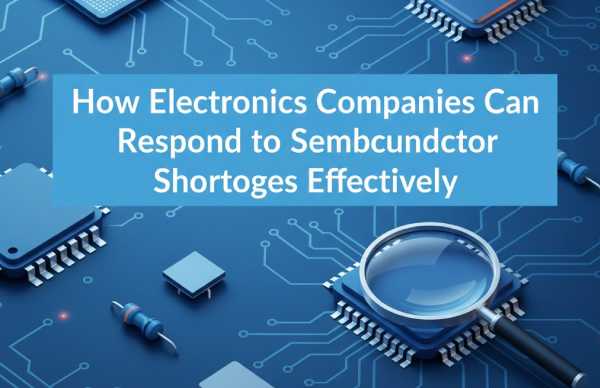Common Control Interface
EN: Enable. enable the chip to work. When you want to use it, turn on the EN pin, and turn it off when you don't use it. Some chips are high enable, some are low enable, you can only know by reading the specification.
CS: Chip Select. Chip selection. It is usually used to select which chip to receive when sending data. For example, multiple devices can be mounted on one SPI bus, and multiple DDR memory chips can also be mounted on the DDR bus. At this time, CS is needed to control which device to send the data to.
RST: Reset. Sometimes it is called R for short or RESET for full. Sometimes it is marked RST_N, indicating that the Reset signal is pulled low to take effect.
INT: Interrupt. As mentioned in the previous article, the meaning of interruption is that someone woke you up while you were sleeping, or your girlfriend called while you were watching a movie.
PD: Power Down. Power off does not necessarily have to cut off the external power supply of the chip. If the chip has its own PD pin, pulling the PD pin directly is equivalent to power off. This cable will be used on the camera, because the general camera has 3 sets of power supply, and it is easier to control the three power supplies to directly cut off the power than to directly operate the PD pin. (There is a Power Delivery also called PD in the USB Type-C interface, which is completely different from this one, don’t get it wrong)
CLK: Clock. The clock line is easy to interfere and be interfered by others, so it needs to be well protected during layout. For the clock of the digital transmission bus, it is generally labeled as xxx_xCLK, such as SPI_CLK, SDIO_CLK, I2S_MCLK (Main Clock), etc. For the system clock, the frequency is often marked with. Such as SYS_26M, 32K, etc. It doesn't matter if the number is marked but not the word CLK, because only the clock will be marked like this.
CTRL: control. Writing CONTROL is too long, so it is abbreviated as CTRL, or sometimes CMD (Command).
SW: Switch. Signal line switches, key switches, etc. can all use SW.
PWM: PWM, this is already very clear.
REF: Reference. For example I_REF, V_REF, etc. Reference current, reference voltage.
FB: Feedback. feedback. There will be feedback signals on the boost and step-down circuits, and the meaning is similar to Reference. The chip dynamically adjusts the output according to the voltage level collected from the outside. If the external voltage is low, the output will be increased, and if the external voltage is high, the output will be reduced.
A/D: Analog/Digital, analog and digital. Such as DBB=Digital Baseband, AGND=Analog Ground.
D/DATA: data. It is called SDA (Serial DATA) on I2C, SPI_DI, SPI_DO (Data In, Data Out) on SPI, and D0, D1, D32 on DDR data lines.
A/Address: address line. The usage is the same as the data line. It is mainly used on the transmission interface where the address and data are separated, such as DDR. Other interfaces, slow ones like I2C, SPI, and fast ones like MIPI, RJ45, etc., all address and data are transmitted on a set of lines, so there is no address line.
Marking of common directions
TX/RX: Transmit, Receive. send and receive. This concept is most commonly used on serial ports (UART), one line is responsible for sending, and one line is responsible for receiving. Special attention should be paid here, the transmission of one device corresponds to the reception of the other device, and TX must be connected to RX. If TX is connected to TX and both are sent, no data will be received.
In order to prevent errors, it can be marked as: UART1_MRST, UART1_MTSR. The meaning of MasterRX Slave TX. Master is the main control chip, and Slave is the slave device. TX and RX are easy to be wrongly marked, especially when the schematic diagram has dozens of pages.
P/N: Positive, Negative. positive and negative. For differential signal lines. In addition to DDR and SDIO, there are few other parallel data transmission interfaces. USB, LAN, MIPI LCD, Camera, SATA, etc., almost all high-speed data buses have become serial data transmission.
The speed of the serial signal line is very high, it can go up to GHz casually, and the voltage is very low, only a few hundred millivolts, so it is easy to be interfered. It needs to be made into a differential signal, that is, use two lines to transmit a data, one for positive and one for negative of. When it is transmitted to the other side, the data is subtracted, the interference signal is subtracted, and the data signal is doubled.
For a signal like RESET_N, it only plays the role of highlighting, indicating that the RESET signal takes effect only when it is pulled low. Most devices are active low RESET, and occasionally some devices pull RESET high.
L/R: Left, Right. Usually used for audio cables to distinguish left and right. Sometimes signals such as speakers are transmitted through differential, which is marked by SPK_L_N and SPK_L_P.
Common equipment abbr
BB: Baseband, baseband processor. More than a decade ago, mobile phone chips only had communication functions, and did not have such a powerful AP (CPU running the system). The main chip in the mobile phone was called a Baseband baseband chip. Later, the performance of mobile phones became stronger, and many old engineers still used to call the main chip BB instead of CPU.
P(GPIO): Many small chips, such as single-chip microcomputers, have a relatively high interface generalization, most of which are GPIO ports, and can be used for any purpose, so it is not so clear to mark the pins, directly use P1, P2, P1_3 like this way to indicate. The number of P is the number of GPIO. P1_3 is the third GPIO of the first group. (GPIOs of different groups may have different voltage domains)
BAT: Battery. All battery voltages can be called VBAT.
CHG: Charge.
CAM: Camera.
LCD: display
TP: Touch Panel.
DC: Direct Current. It is usually used as an external DC input interface on the device, rather than referring to the power supply method or power supply voltage. For example, the meaning of VCC_DC_IN is the external DC interface power supply.



























